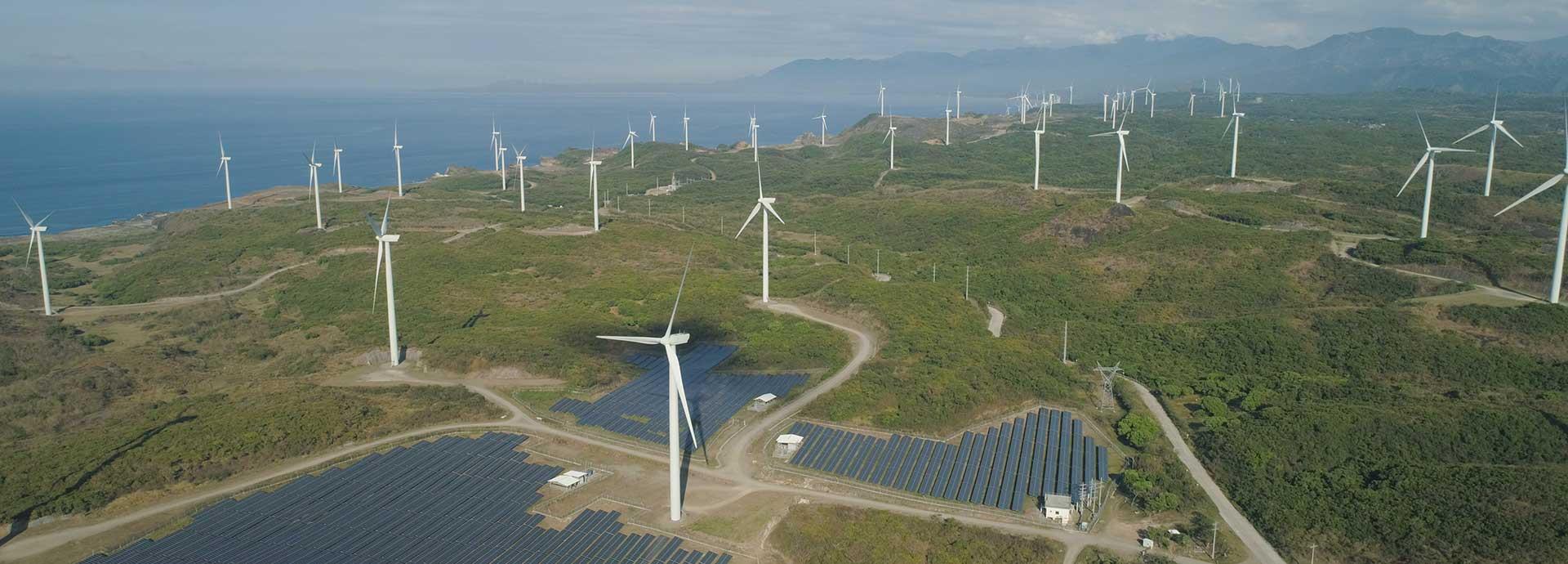

The Philippines is making a major push to develop renewable energy. While the country has natural advantages for the development of renewables in addition to pro-renewables governmental policies, Wärtsilä’s flexible energy solutions are the missing link to enable the fulfilment of this ambitious plan. Learn more.
The Philippines is facing a significant energy challenge. The demand for energy is increasing drastically, but the country has some of the highest energy prices in southeast Asia. This disparity stems from the way the Philippines produces energy. In 2017, coal and oil accounted for 27% and 34%, respectively, of its primary energy. Moreover, much of this was imported: only 51% of the country’s energy mix was from domestic sources.
Yet the Philippines has an ambitious plan to sustainably increase and improve its energy supply. The Department of Energy’s power development plan aims to increase energy capacity while simultaneously making it more economic, flexible and less polluting.
“Investing in renewable energy to power the future is one of the flagship programs of the government,” explains Mylene C. Capongcol, Director of the Renewable Energy Management Bureau at the Department of Energy in the Philippines.
“The rapid deployment of renewable energy has been driven by a wide range of objectives, which include advancing economic development, improving energy security, enhancing energy access, catalysing rural development and job creation, and mitigating climate change,” says Capongcol.
“Altogether, these drivers can be described as the pursuit of sustainable development.”
To meet its renewable energy goals, the government is recommending more investments in renewable energy technologies and providing incentives for developers.
Use your advantages
The Philippines has some natural advantages for the development of renewables. Like Iceland, the Philippines is in a geologically active part of the world and they have developed geothermal energy since the late 1970s. The rivers and mountains are perfect for hydropower, and the country is also a feasible place for solar and wind generation. Most importantly, there is a strong focus on renewables from decision-makers.
“The Philippines’ Renewable Energy Act was deemed the first in Southeast Asia to have a comprehensive legislation on renewable energy,” Capongcol says. “The primary goal is to achieve energy self-reliance through the accelerated exploration and development of renewable energy sources.”
The Philippines offers fiscal and non-fiscal incentives to promote renewables, such as feed-in tariffs during early days and net-metering, most recently a mandatory requirement for producers to carry a minimum share of renewables and the option for customers to purchase renewable energy.
Cheap solar, expensive coal
The results are impressive: as of March 2018, the DOE had awarded 880 renewable energy contracts with another 192 applications pending. The long-term plans are even more impressive, with a tripling of renewable energy capacity to 15,304 MW in 2030. Renewables would make up at least 35 per cent of supply if this goal is reached. So, the Philippines are clearly on the path towards 100% renewable future.
Market forces are also helping to promote renewables. The cost of electricity generated from solar and wind has plunged in recent years. Additionally, the Philippines has added a hefty tax on imported coal, making renewables the cheapest source of electricity already today.
“New baseload coal or combined-cycle power plants are not any more feasible with current electricity market prices,” says Ville Rimali, Business Development Manager with Wärtsilä Philippines. “Already solar is the cheapest in many cases. Wholesale prices have gone down and the price trend remains downward, which challenges baseload generation.”
Adaptability is the key
Yet, challenges remain. One is the mismatch between demand and how renewable energy is supplied. The Philippines’ sophisticated modelling can predict demand for energy quite accurately, yet forecasting the energy generated by wind and solar is difficult. Moreover, wind blows when it blows, not when energy is needed. This requires much more flexibility built into the system.
“Wärtsilä can help provide balancing power solutions which give more flexibility in the power system,” Rimali explains. “In this new era of power generation, you need flexible power plants which can start up in minutes. We will also see more energy storage capacity already this year. Luckily the Department of Energy and private players on the energy sector know that the world is changing and they have renewed their power development plans to reflect this new reality.”
Did you like this? Subscribe to Insights updates!
Once every six weeks, you will get the top picks – the latest and the greatest pieces – from this Insights channel by email.


